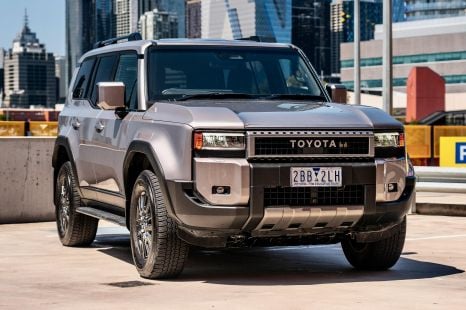

Max Davies
2025 Toyota Prado GXL review
2 Months Ago
Aussies are lovers of SUVs, but is the humble wagon making a return? Subaru hopes so.
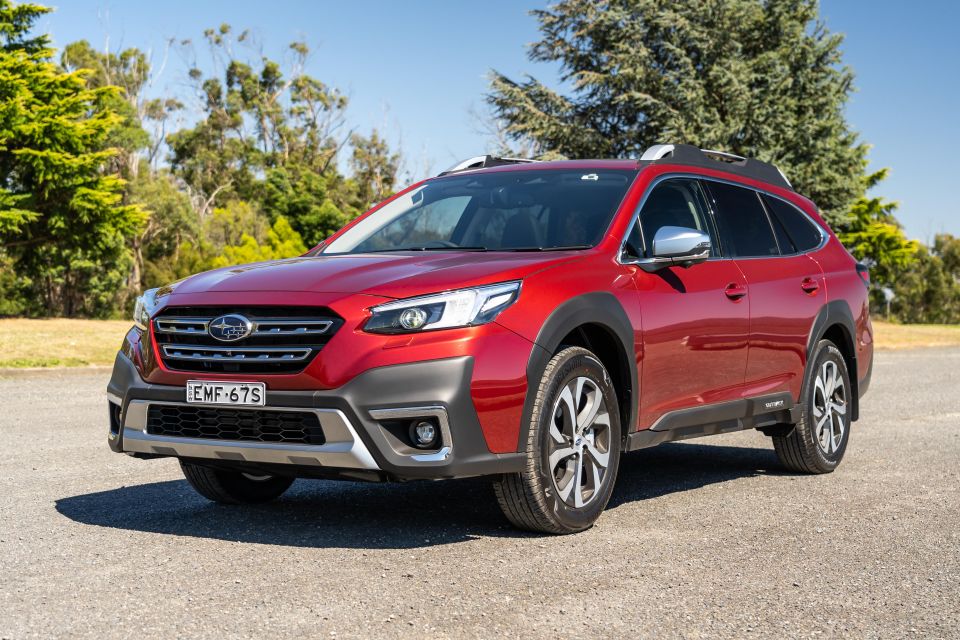
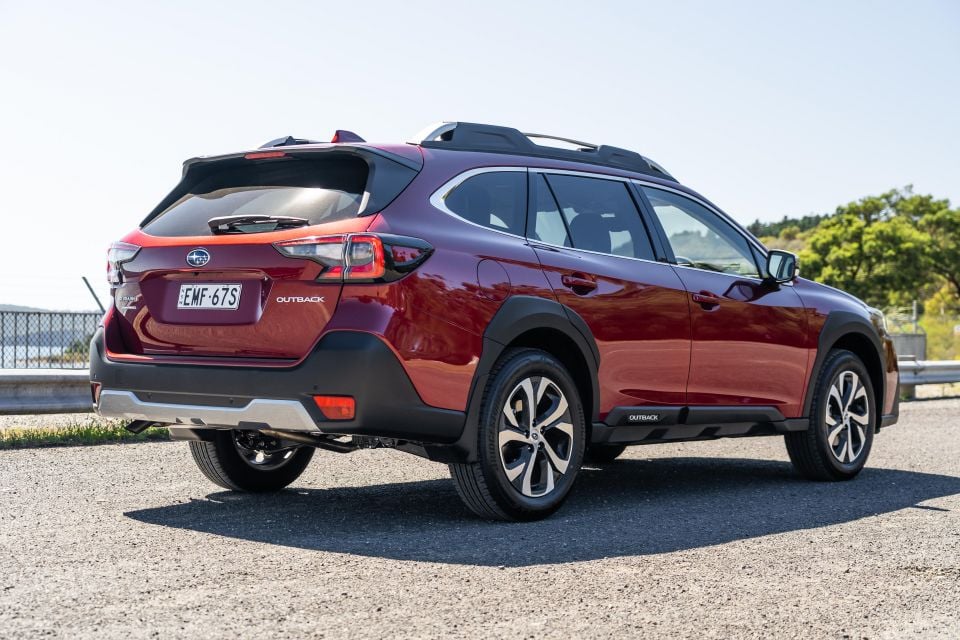

Founder
New from
$37,440
excl. on-roads

Founder
New from
$37,440
excl. on-roads


Founder
New from
$37,440
excl. on-roads

Founder
New from
$37,440
excl. on-roads
Quickly see how this car stacks up against its competition. Select any benchmark to see more details.
Where expert car reviews meet expert car buying – CarExpert gives you trusted advice, personalised service and real savings on your next new car.
It’s fair to say we’ve gone SUV crazy in Australia. There’s a perception that an SUV is the answer to all questions a family could ask, but have you ever stopped to think about whether a station wagon could do the job?
The 2021 Subaru Outback has been out for a while in the USA and has finally touched down in Australia to complement the Forester in Subaru’s local range.
The question is, does the Subaru Outback do everything an SUV does? If so, is it worth considering the Outback over the litany of other SUV options available on the market? We did a 900km road trip to find out.
Subaru has simplified the Subaru Outback range in Australia. It now consists of one model with three variants.
The range kicks off with the Subaru Outback AWD from $39,990 before on-road costs, moving up to the Subaru Outback AWD Sport, which is priced from $44,490 before on-roads.
Finally, there’s the Subaru Outback AWD Touring (as tested here), which costs $47,790 plus on-roads.
There are nine exterior colours to choose from. They’re all free of charge too, which is great news.
For more detail on 2021 Subaru Outback pricing and specifications, have a read of our detailed breakdown.

There are no options to pick from when it comes to the Subaru Outback. That gives buyers a bit more confidence when it comes to budgeting for their new vehicle.
On the outside of the top-specification Touring grade you’ll find, 18-inch alloy wheels, LED headlights with auto dipping, LED daytime running lights, LED tail lights, privacy glass, an electric sunroof, silver roof rails, a power tailgate, rear parking sensors, front and side-view cameras, and proximity entry and start.
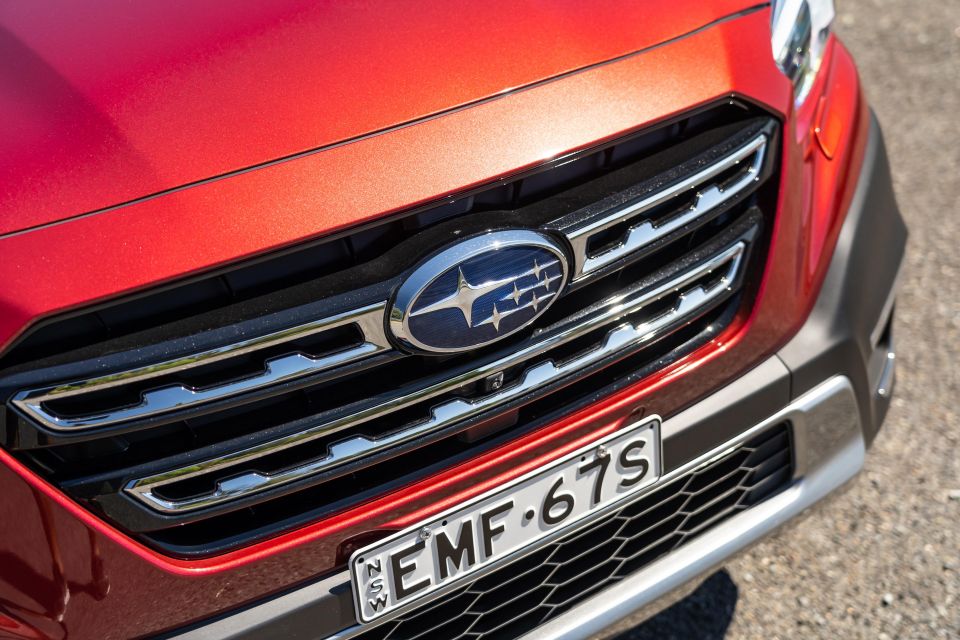
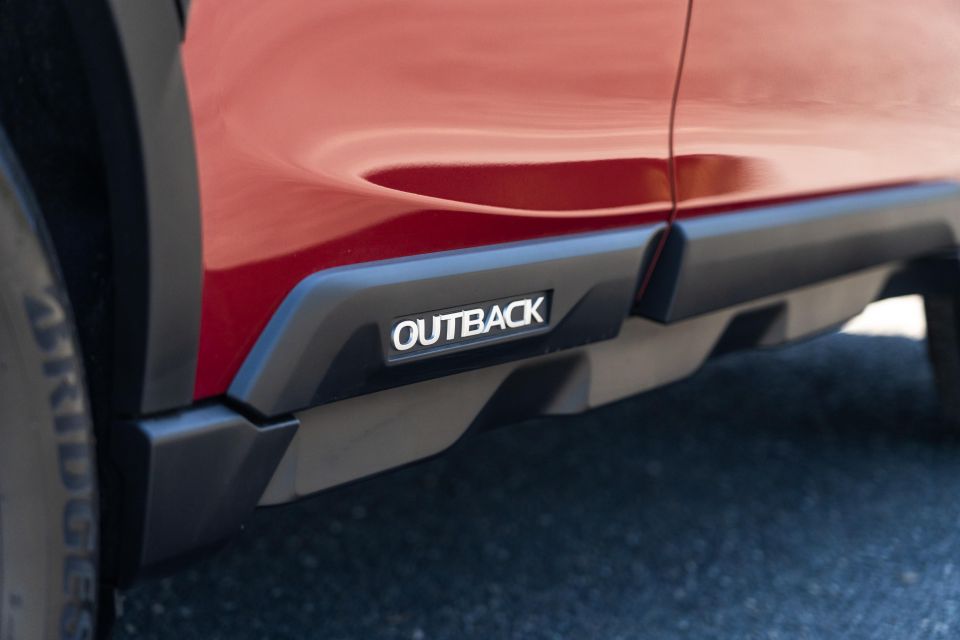
Inside the cabin is Nappa leather upholstery, heated seats in the first and second rows, a heated steering wheel, a nine-speaker Harman/Kardon sound system with CD player, inbuilt satellite navigation, Apple CarPlay and Android Auto, electric seat adjustment with driver memory, dual-zone automatic climate control, an auto-dimming rear vision mirror, adaptive cruise control, and automatic wipers.
For a full breakdown of the standard specifications and features of the 2021 Subaru Outback, check out our pricing and specifications guide.
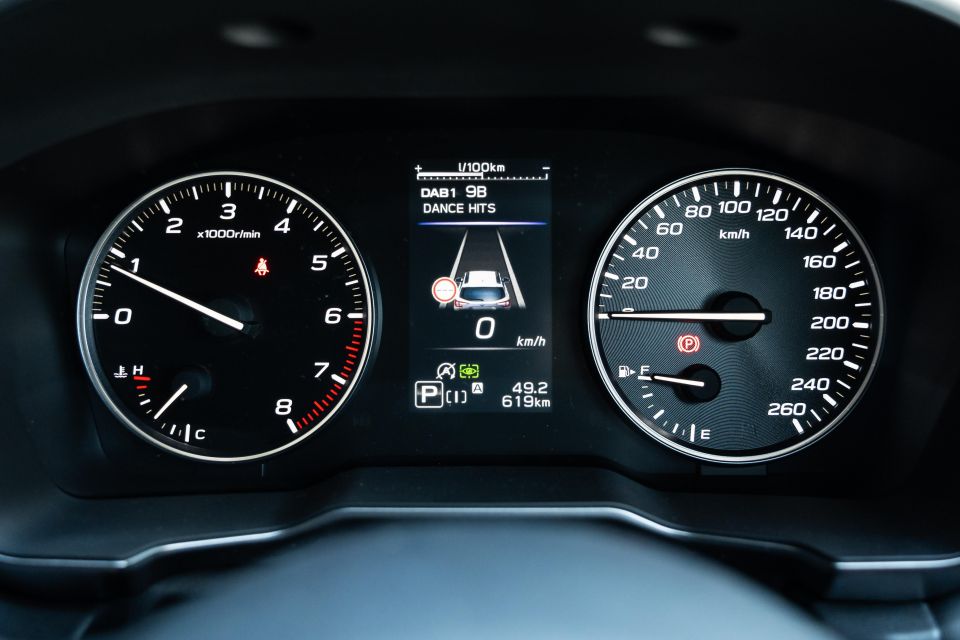
The 2021 Subaru Outback hasn’t been crash tested by ANCAP yet. As a guide, the last model achieved a five-star safety rating.
Standard safety features outside of a full suite of airbags includes low-speed, high-speed and reverse autonomous emergency braking, adaptive cruise control with semi-autonomous lane assist function, blind-spot monitoring, front and rear cross-traffic alert and driver attention monitor.
There’s also a cushion-mounted airbag for the front passenger seat which inflates to lift the base of the passenger seat, aimed at stopping the occupant from slipping out beneath it.
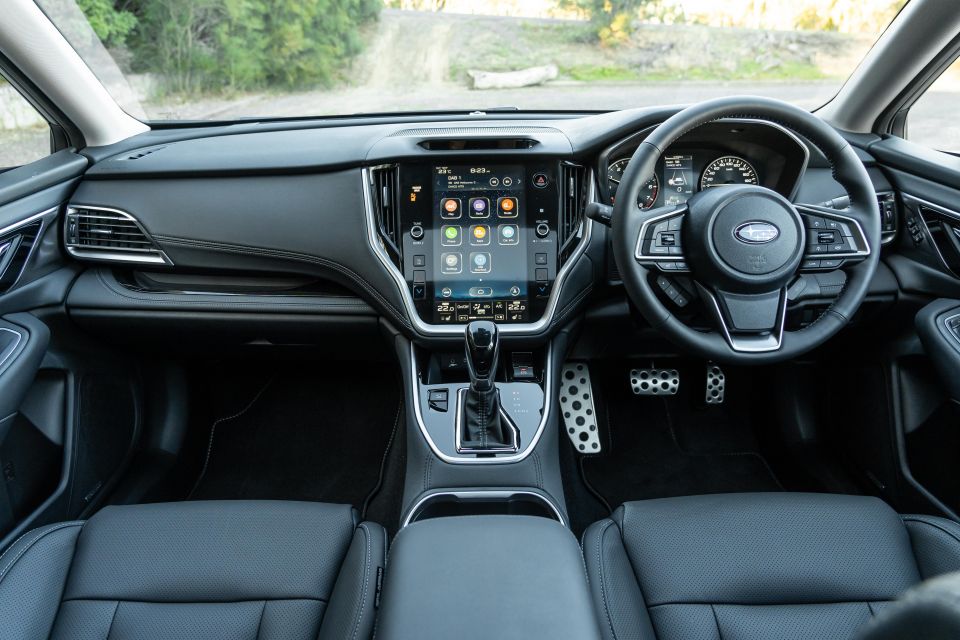
Subaru has kept to a fairly basic formula with the Outback over the years, but this latest update feels like the biggest leap forward yet in terms of interior and fit and finish.
Central to the cabin is a mammoth 11.6-inch screen that’s standard across the range.
It comes with wired Apple CarPlay and Android Auto (with Apple CarPlay taking up almost the entire screen), built-in satellite navigation (powered by TomTom), AM/FM and DAB+ radio, along with the clever integration of birthday and anniversary reminders.
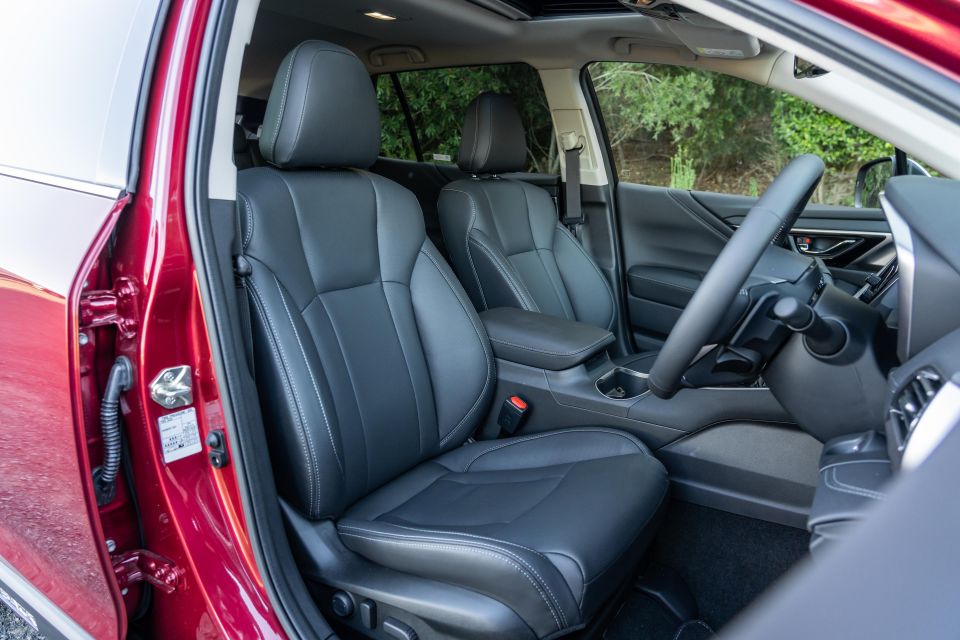
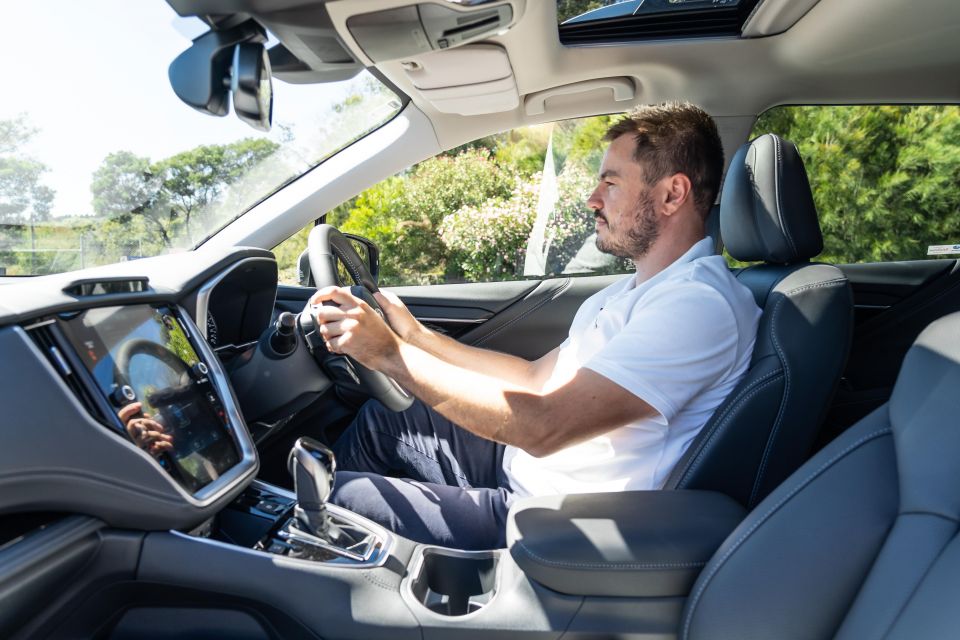

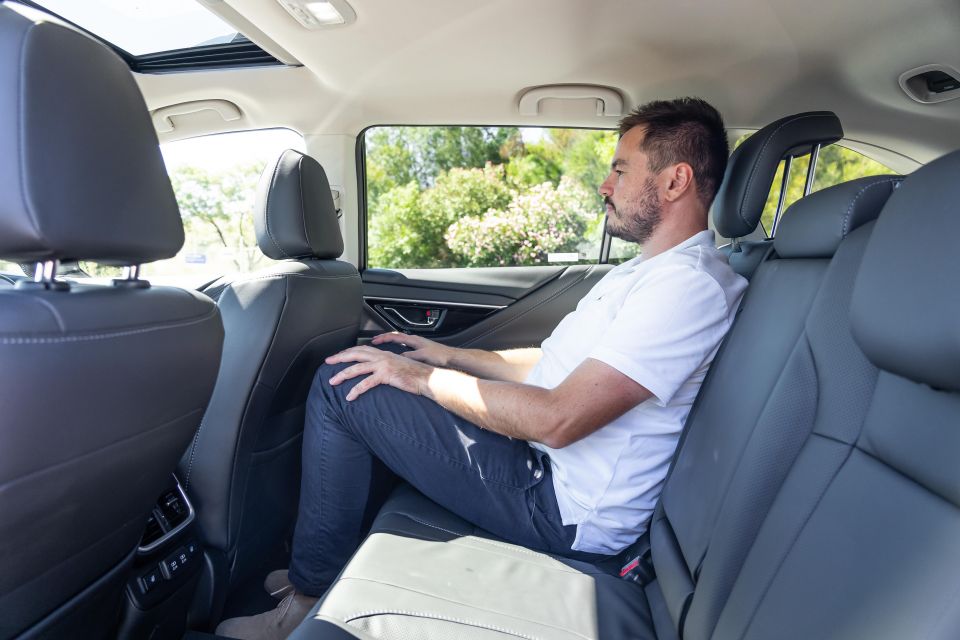
All of the car’s preferences and settings are tied to profiles, which are accessed and recalled each time a driver gets into the car. Unlike most new cars on the market that link their profiles to a key, the Subaru Outback scans the face of the driver, figures out who they are, and then recalls their settings.
This same sensor is used for the fatigue detection system and works well.
The infotainment system itself is good. It can be a little fiddly to use at times, but once you become familiar with the placement of all items it gets easier to use.
While the climate controls are integrated into the screen at the bottom, the temperature can manually be changed with buttons instead of needing to use the touchscreen.
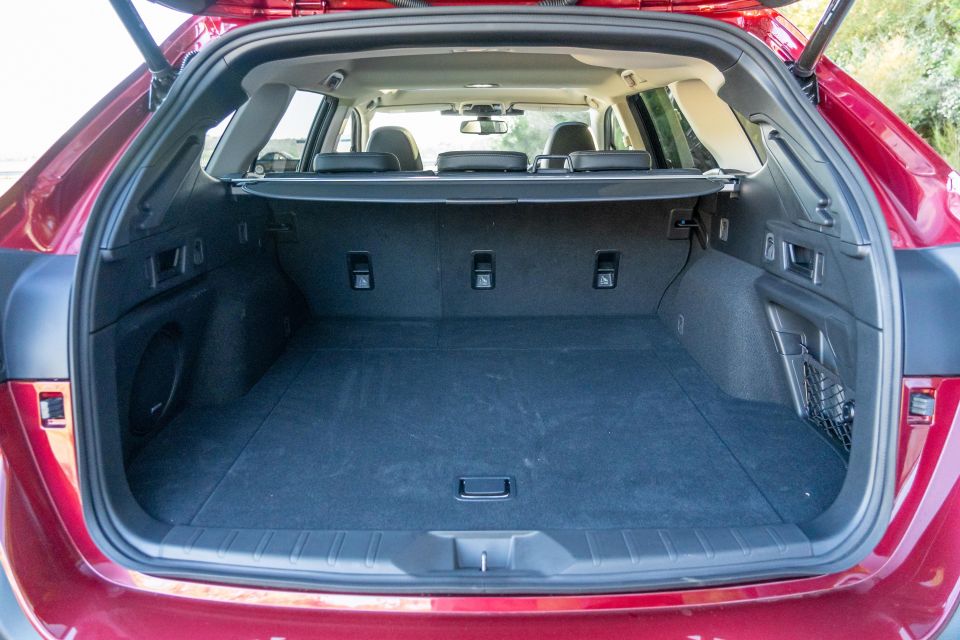
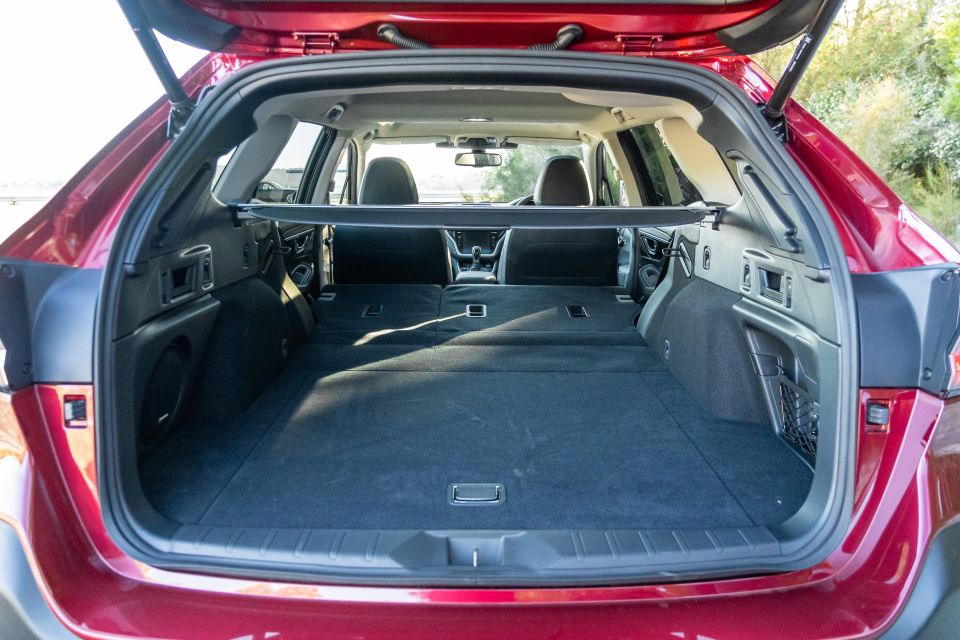
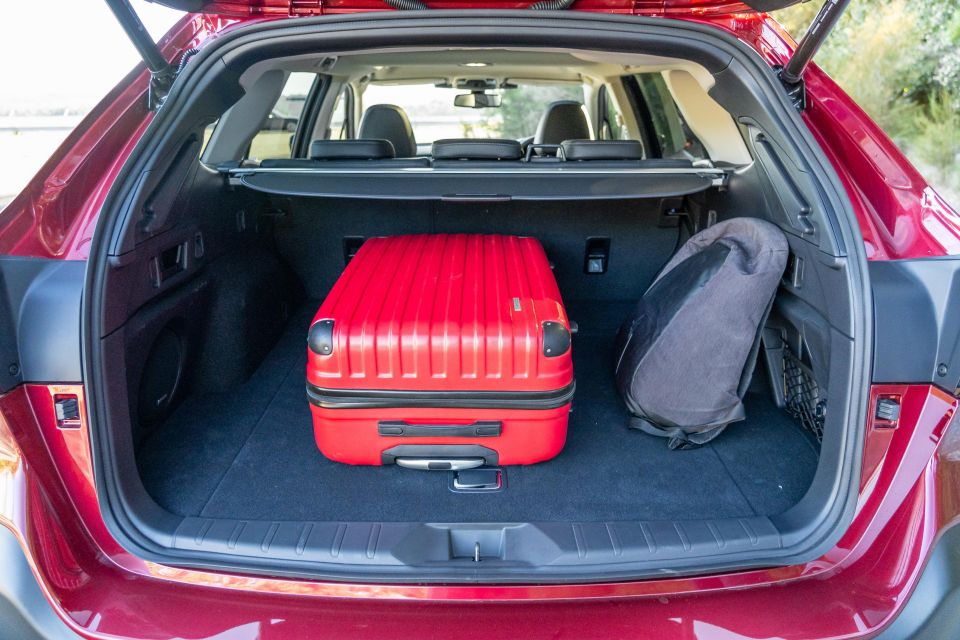
Subaru has gone to a lot of effort to present the interior nicely. Soft-touch rubber is used along the dashboard, while a leather-esque material is used on the dashboard fascia.
There’s also extensive use of piano black around the cabin, which I don’t love. Our test car was virtually brand new and was presenting with scratches on the piano black material. It tends to mark and scratch very easily.
Two 2.1A USB ports at the front are joined by an auxiliary port and a centre console-mounted CD player for music streaming. You can also use Bluetooth or smartphone mirroring to play your favourite tunes.
A nine-speaker Harman/Kardon sound system provides plenty of audible punch and includes a subwoofer mounted in the boot. It’s a great sound system and perfect for those that like listening to music while the kids are at sport.
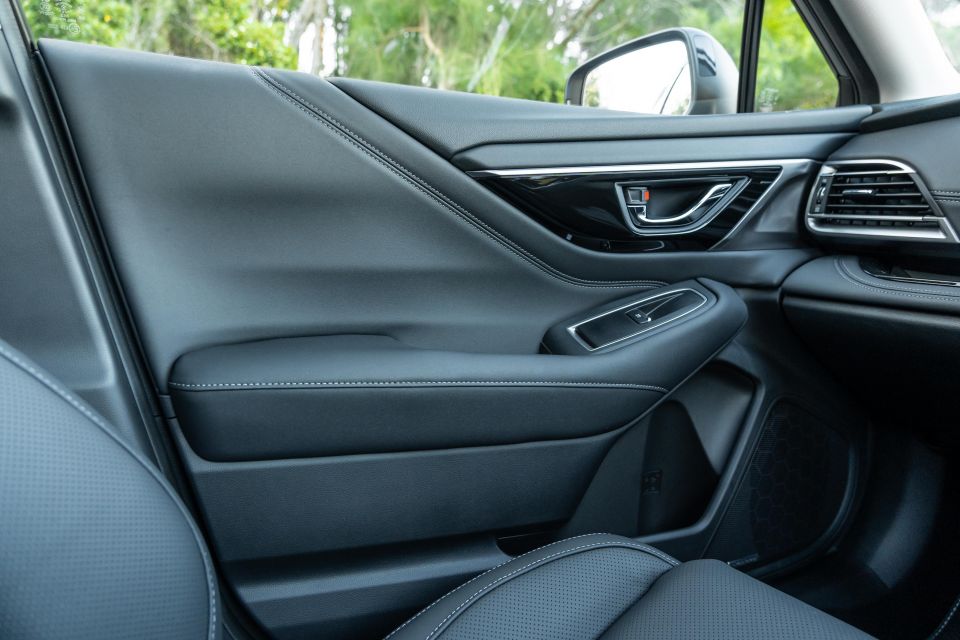


Storage throughout the cabin is well thought out with two cup holders offering variable depths, a generous centre console and glovebox, dash-top storage, and storage along the centre tunnel.
Cargo capacity comes in at 522 litres in five-seat configuration. Beneath the cargo floor is a full-sized spare alloy wheel and the second row drops using a set of levers in the boot.
Leg- and headroom in the second row is excellent with ample room for adults. Two ISOFIX points on the two outboard seats are joined by seat heating, air vents and two more 2.1A USB outlets.
Fit and finish throughout the cabin, along with build quality feels excellent. There weren’t any parts of the interior that felt cheap or poorly assembled. Unlike the USA-market car, our Outbacks are built in Japan.
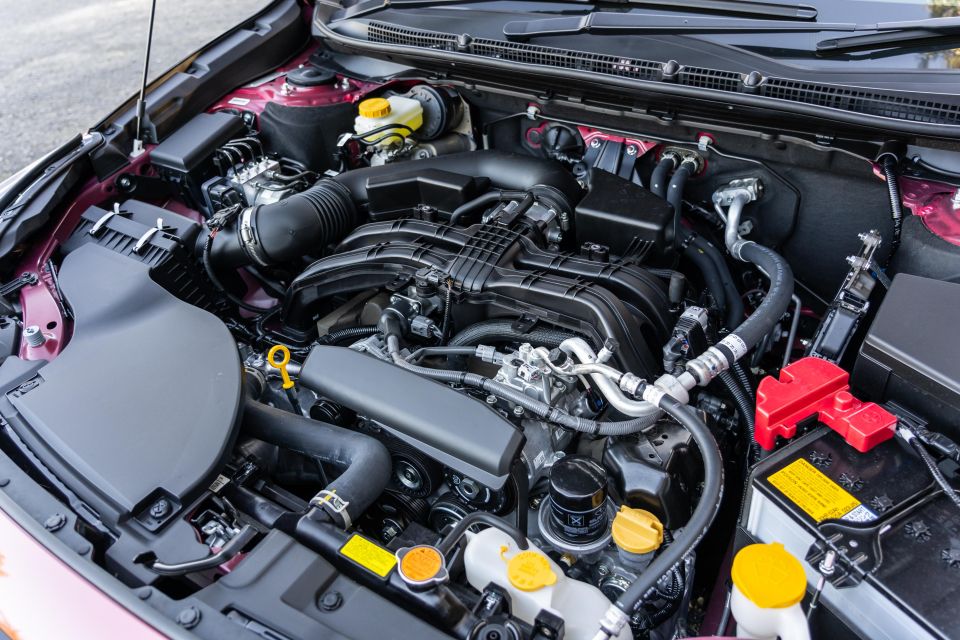
Powering the Subaru Outback for the Australian market is a 2.5-litre naturally aspirated four-cylinder petrol engine producing 138kW of power and 245Nm of torque.
It’s mated to a continuously variable transmission (CVT) and sends torque to all four-wheels using a continuous all-wheel drive system.
Subaru claims an official fuel economy of 7.3 litres of fuel per 100km. During testing, we achieved around 11L/100km when driving around the city. An extended drive that included predominantly highway driving saw that figure lower to 7.5L/100km.
The Subaru Outback is also capable of running on 91RON regular unleaded fuel.
Over in the US, this same vehicle is powered by a turbocharged 2.4-litre four-cylinder boxer engine. Unfortunately it hasn’t been developed for the right-hand drive market, so it’s unlikely that we’ll see it used in the Outback in the near future.

If you’ve ever driven a petrol Subaru, you’ll be familiar with the boxer rumble. There’s a slight vibration as it idle, while the engine note is unique enough to stand out in comparison to most other four-cylinder vehicles.
The Subaru Outback is no exception. The seating position offers a commanding view over the road with wing mirrors big enough to get a clear view down the sides of the vehicle.
All of the cabin controls are within easy reach and the steering wheel sits nicely in the hand. You’re also treated to a set of comfy seats finished in Nappa leather in the top specification Outback Touring we have on test.
Setting off from a standing start, the CVT does a commendable job of offering enough throttle feedback to move the Outback along with ease. Like all other CVTs, when you step on the throttle it can get a little thrashy inside the cabin when the engine fires to life.
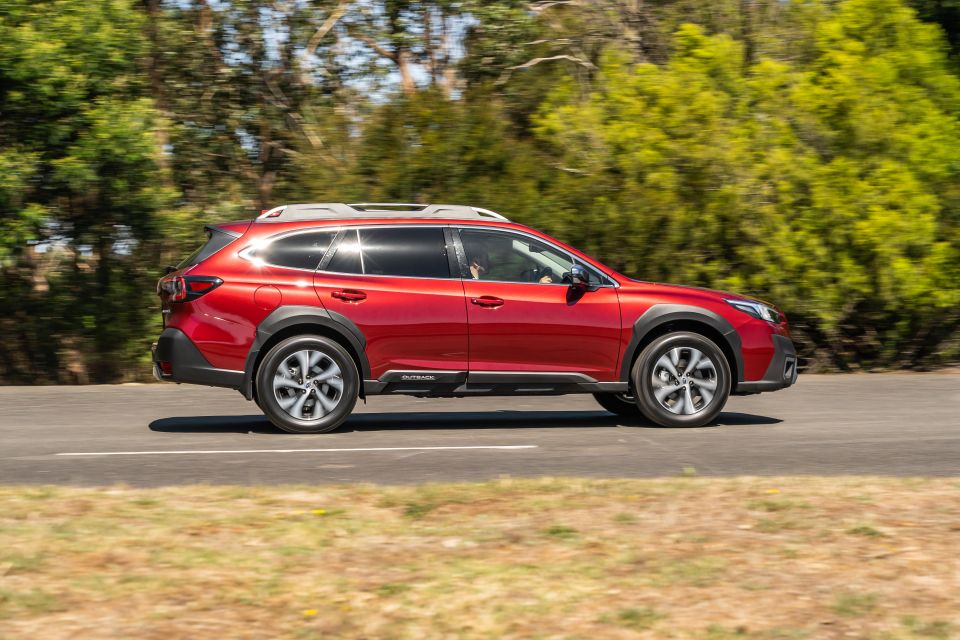
It produces its peak torque and power outputs at 5800rpm and 3400-4600rpm respectively, so the transmission is always trying to stay within the peak torque band when the driver demands a hit of torque.
There’s a button on the steering wheel that switches between S and I modes, with S being the vehicle’s Sport mode. It sharpens throttle response and ensures the CVT is ready to react a little quicker.
In and around the city the Outback feels powerful enough to keep up with traffic and rarely feels like there isn’t enough poke to keep up with the flow of things.
The ride is a standout feature of the Outback. Despite riding on 18-inch alloy wheels with 60-profile tyres, the ride is excellent. It makes light work of speed humps and cobblestones. Even when loaded the ride is compliant and fuss-free.
Out on the open road you’ll notice tyre noise in the cabin. It’s most noticeable on coarse chip country roads above 80km/h. It’s not terrible, but you’ll want to crank the stereo a little to keep it subdued.
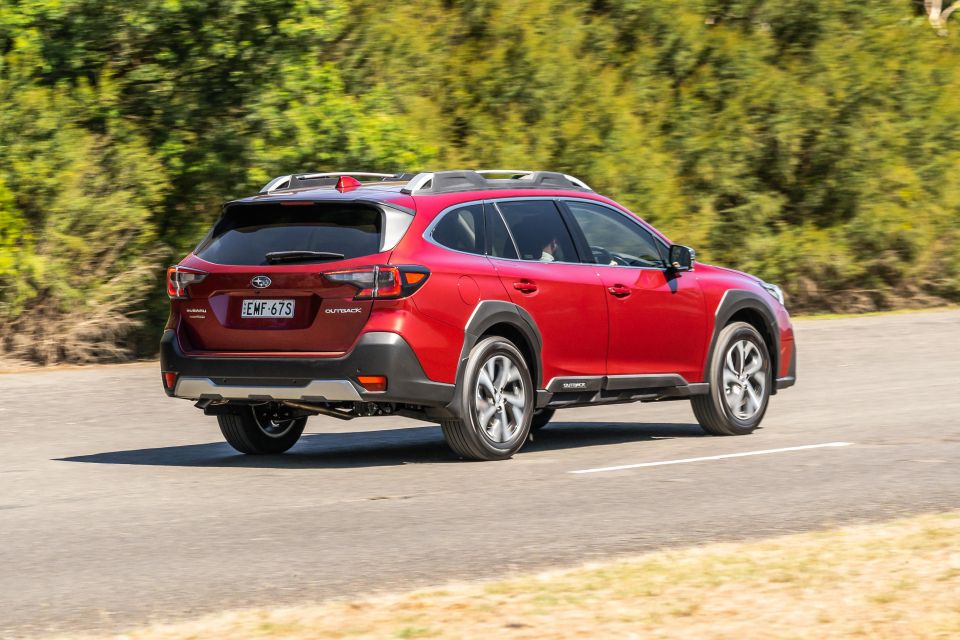
The open road also helps push fuel use down. Our average in and around the city sat at around 11L/100km and that gradually dropped to 7.5L/100km after a long highway stretch.
We went on a road trip to Victoria’s Alpine region and it showed the Outback’s true strengths. 213mm of ground clearance offers enough room to climb over the basic obstacles you’ll encounter on the way to your favourite camp site.
Permanent all-wheel drive also means there’s extra traction available above and beyond what’s offered with an on-demand four-wheel drive system that waits for traction loss before engaging.
Three X-Mode settings allow the driver to switch between off-road modes that vary traction control intervention for off-road driving. They’re handy if you ever venture onto sand where traction control can sometimes kill progress.
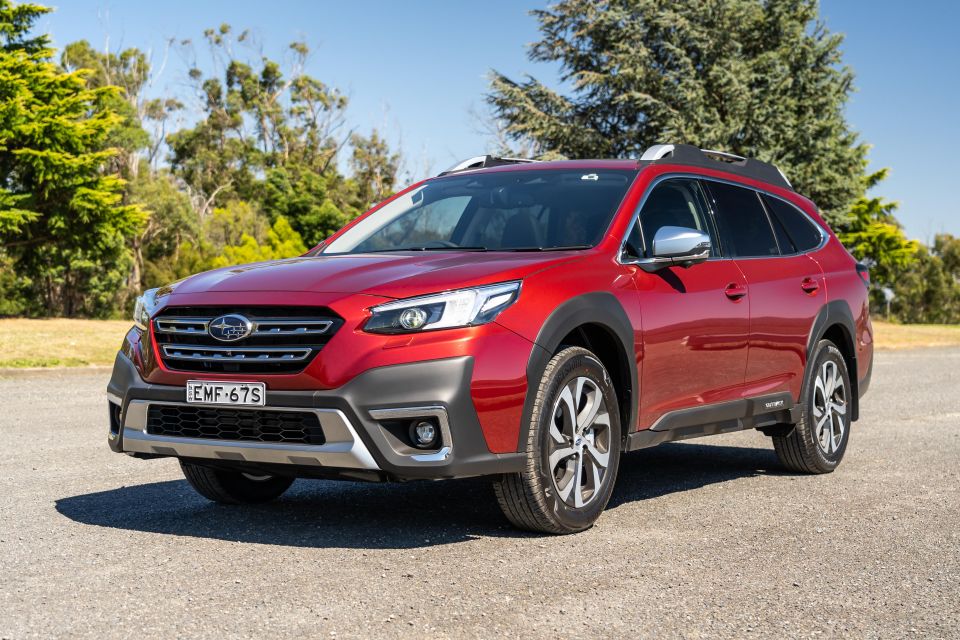
One of the things we didn’t love about the drive experience was the semi-autonomous steering function and radar cruise control. The self-steering feature often veered towards lines and didn’t self-centre like better systems on the market.
The cruise control also struggled to maintain speed on hilly terrain. It would sometimes speed up going up a hill, reach the peak, exceed the speed limit and then brake to slow down below the speed limit. On flat ground it was fine, but when the terrain varied it became a little frustrating.
On the handling front the Outback feels like you’d expect a wagon on stilts would feel. It’s confident and fun without being overly sporty. There’s plenty of feel through the steering wheel and it’s an engaging drive that puts a smile on your face.
Drivers wanting to tow with the Outback will appreciate a 2000kg braked towing capacity.
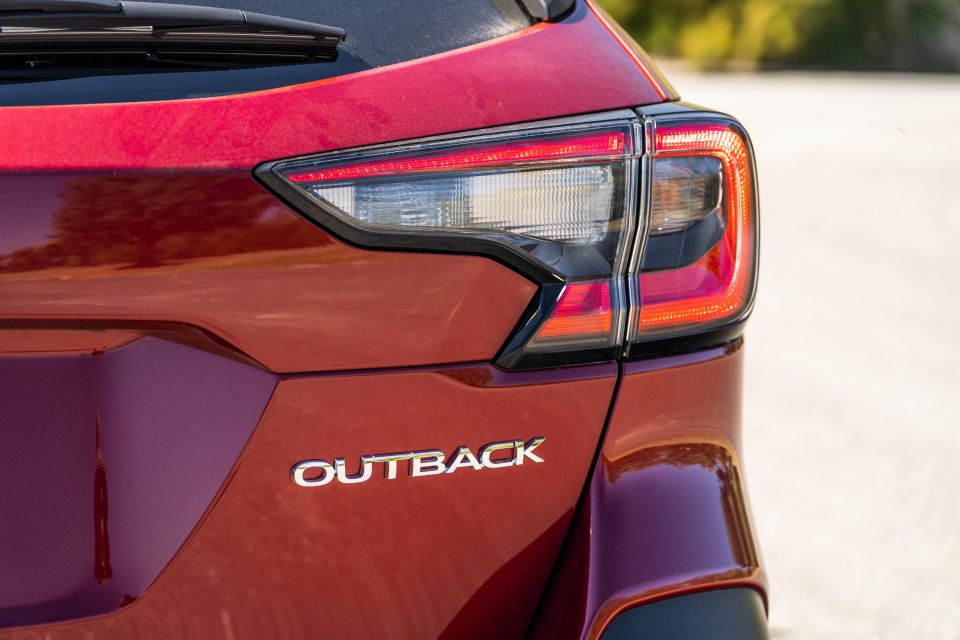
Where expert car reviews meet expert car buying – CarExpert gives you trusted advice, personalised service and real savings on your next new car.
The Subaru Outback is sold with a five-year, unlimited-kilometre warranty. Servicing intervals are every 12 months or 12,500km.
Over a five year period, servicing comes in at $2450 or an average of $490 per service.
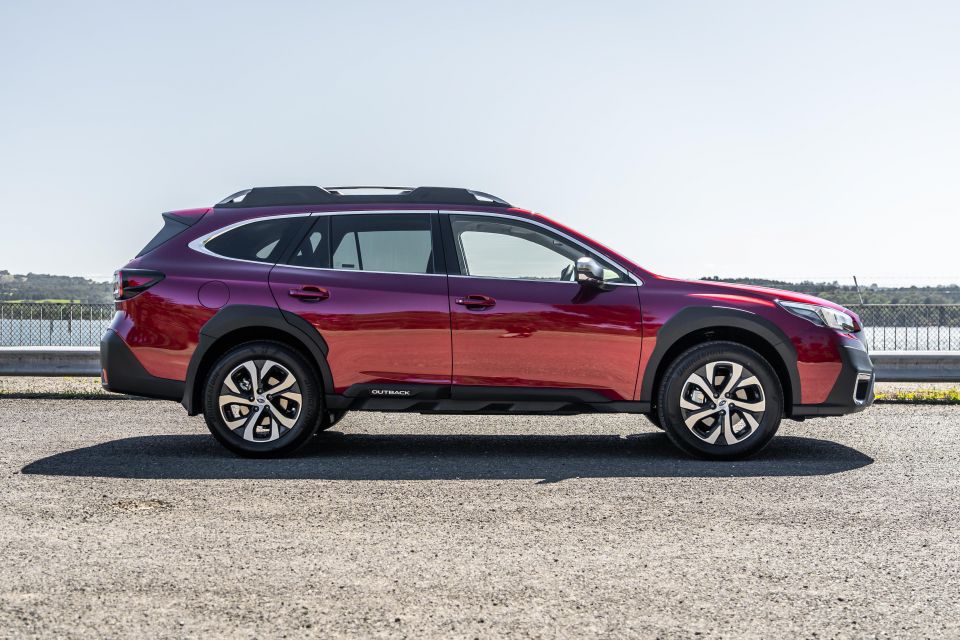
Subaru’s all-new Outback presents the most compelling argument yet against the need for an SUV.
The ground clearance, coupled with a permanent all-wheel drive system and comfortable ride makes it as good as any other SUV similar in price.
The engine feels like it could use a little more punch, and the US market 2.4-litre turbo would certainly answer that complaint, but outside of that it’s hard to fault.

Subaru has finally sorted out service intervals and spaced them far enough apart to ensure you’re not at the dealer each six months paying more money to have your car serviced.
If it was my money, I’d be aiming for a mid-specification Outback. It presents the most compelling purchase option and comes with virtually everything you’d ever need.
Are you in the same boat as us? Do you think an off-road focused station wagon like the Outback does enough to sway buyers away from an SUV?
Where expert car reviews meet expert car buying – CarExpert gives you trusted advice, personalised service and real savings on your next new car.
Paul Maric is an Australian car expert based in Melbourne, Australia. Paul is a founder of CarExpert.com.au & formerly part of the CarAdvice founding team.


Max Davies
2 Months Ago


Matt Campbell
2 Months Ago
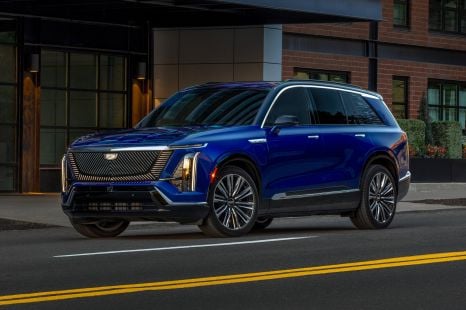

William Stopford
2 Months Ago
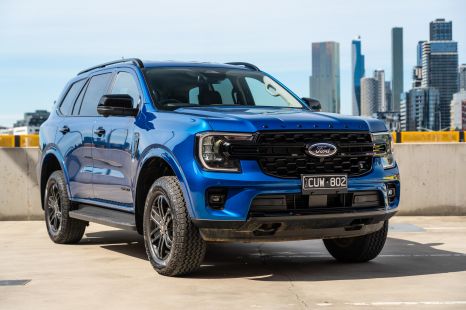

Josh Nevett
2 Months Ago


Max Davies
29 Days Ago
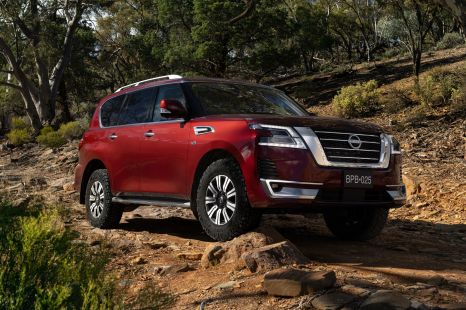

CarExpert.com.au
17 Days Ago